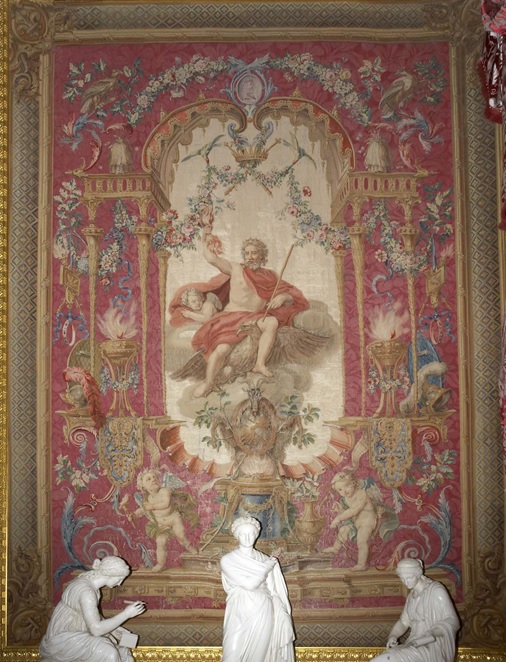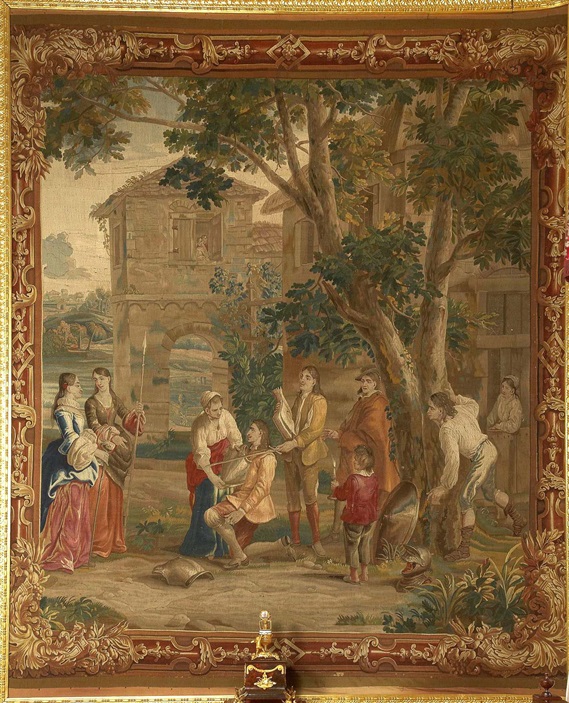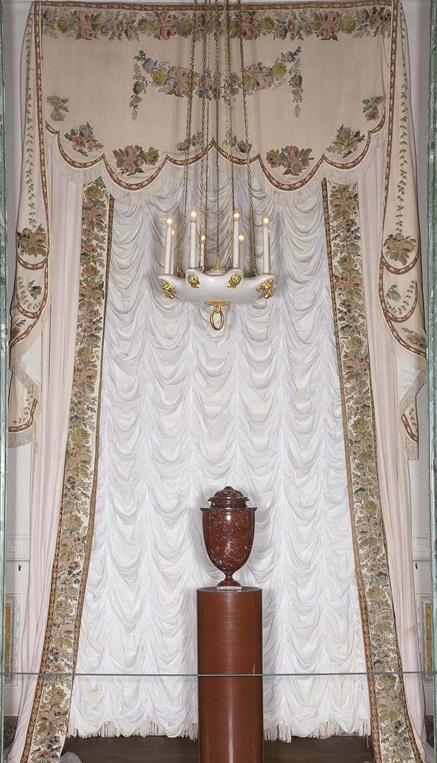Decorative fabrics
The collection of decorative fabrics belonging to the Pavlovsk Museum-Reserve is known to be one of the most considerable in Russia. It comprises various articles - from elegant handkerchiefs trimmed with finest hand-made laces to monumental tapestries, such as the gobelins Ladies Serving Don Quixote, Jupiter and Juno (Gobelin Royal Manufactory, France, 1770s). On the whole the Pavlovsk collection consists of three main groups - decorative fabrics aimed for mounting of interiors, different carpets and costumes with accessories. All of them were produced in the period of the early 18th - first decades of the 20th centuries at the celebrated workshops of Russia, France, Germany, Belgium, Italy, England and in oriental countries. The collection took its present shape after the Second World War when the historical Pavlovsk collection of fabrics was supplemented with articles which had previously belonged to palaces destroyed during the Nazi occupation and survived due to evacuation in Siberia only. In the post-war period it is being constantly replenished by new interesting articles acquired from private persons.
The first decorative fabrics (including gobelins, Lyons silk fabrics and embroideries) were purchased for the Pavlovsk Palace in the 1780s in France, during the journey of the heir to the Russian throne Pavel and his wife Maria to Western Europe.
After the fire of 1803, many rooms of the Great Palace were finished anew and acquired some new furniture. In order to decorate numerous pieces of furniture being made at St Peterburg workshops for Pavlovsk, various embroideries were widely used - as upholstery as well as insets in closets, screens and tables. The embroideries had allegorical and mythological subjects, attributes or ornaments. It is worth to note that embroideries were extremely popular at the start of the 19th century. Alongside the satin and tambour stitching, a new vogue developed for embroideries with cross, half-cross and gobelin stitching. Russian masters also embroidered rugs and there are superb examples of such work in the museum collection.
At this time the palace also acquired a series of Beauvais fabrics manufactured at the close of the 18th century.These typical specimens of French applied art of the late 18th century were used to decorate furniture produced by Russian masters to a design by A. Voronikhin. On the whole, harmonious combination of styles belonging to different countries and epochs is a characteristic feature of the Pavlovsk Palace.




